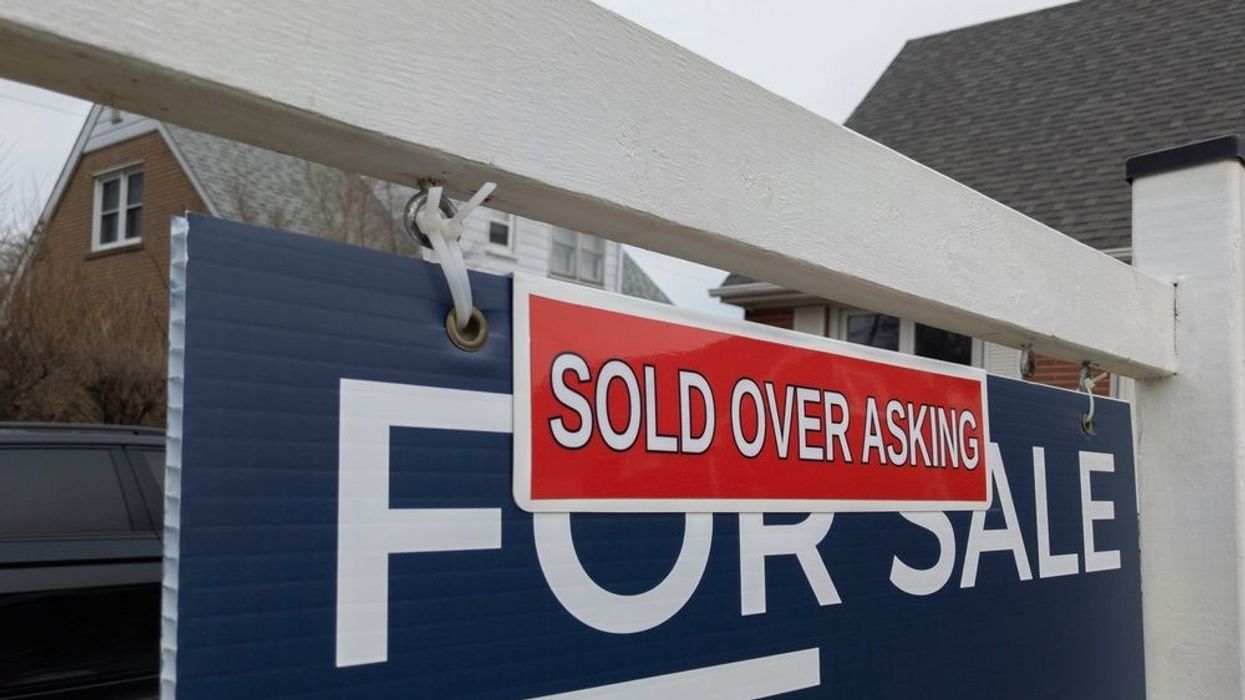Home sales in the Greater Toronto Area (GTA) jumped up significantly in March, further tightening a housing market that was already struggling with limited inventory levels.
Across the GTA, home sales totalled 6,896 last month, according to new market data from the Toronto Regional Real Estate Board. This marks a staggering 44% increase from the 4,783 home sales seen in February. Compared to March of 2022, when the market's comedown first began, sales slumped 36.5% year over year.
Spring is traditionally a much more active time in the housing market, but the number of listings has not kept pace with the rising level of buyer interest. New listings, of which there were 11,184, were down 44.25% on a year-over-year basis, indicating that the market is seeing even tighter conditions than March of last year, TRREB says.
“As we moved through the first quarter, Toronto Regional Real Estate Board Members were increasingly reporting that competition between buyers was heating up in many GTA neighbourhoods. The most recent statistics bear this out,” said TRREB President Paul Baron. “Recent consumer polling also suggests that demand for ownership housing will continue to recover this year. Look for first-time buyers to lead this recovery, as high average rents move more closely in line with the cost of ownership.”
As to be expected, with market conditions tightening, home prices began to inch up. Although still down 14.6% compared to March 2022, last month's average GTA home price crept up 1.2% from February to $1,108,606. Detached homes saw the largest price jump, increasing 4.9% to $1,468,651. Semi-detached homes sat at $1,087,924, townhouses at $935,626, and condo apartments at $703,566.
TRREB Chief Market Analyst Jason Mercer points to lower-fixed rate borrowing costs as adding fuel to the buyer demand fire, which is putting pressure on prices.
“Lower inflation and greater uncertainty in financial markets has resulted in medium-term bond yields to trend lower," Mercer said. "This has and will continue to result in lower fixed rate borrowing costs this year. Lower borrowing costs will help from an affordability perspective, especially as tighter market conditions exert upward pressure on selling prices in the second half of 2023."
Looking forward, TRREB CEO John DiMichele says that high immigration rates will continue to put pressure on the housing market, which will spill into greater demand in the rental market as well.
“As population growth continues at a record pace on the back of immigration, first-time buying intentions will remain strong. Because the number of homes for sale is expected to remain low, it will also be important to have substantial rental supply available," DiMichele said. "Unfortunately, this is not something we have at the present time. We need to see a policy focus on bringing more purpose-built rental units on line over the next number of years."





















